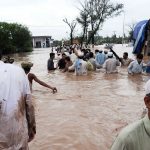On April 28, 2025, a massive power outage plunged Spain, Portugal, and parts of southern France into darkness, disrupting daily life for millions and highlighting the fragility of Europe’s energy infrastructure.
The Blackout Unfolds
The blackout began around 12:30 PM local time, causing Spain’s electricity grid to lose 15 gigawatts—approximately 60% of its national demand—in just five seconds. This sudden loss led to cascading failures across the Iberian Peninsula, affecting major cities like Madrid, Barcelona, and Lisbon.
Widespread Disruptions
The outage had far-reaching consequences:
- Transportation: Flights were canceled, trains halted, and metro services suspended, leaving thousands stranded.
- Essential Services: Hospitals operated on emergency generators, and telecommunications were severely disrupted, affecting internet and mobile services.
- Daily Life: ATMs were non-functional, leading to long queues for cash, and many individuals were trapped in elevators or unable to access basic services.
Investigating the Cause
Authorities are exploring multiple theories:
- Atmospheric Phenomena: Portugal’s grid operator, REN, suggested that rare atmospheric conditions induced oscillations in high-voltage lines, causing synchronization failures.
- Grid Instability: The interconnection between Spain and France’s grids may have experienced instability, leading to the rapid loss of power.
- Cybersecurity: While a cyberattack has been ruled out, the incident underscores the need for robust cybersecurity measures in energy infrastructure.
Recovery Efforts
By the following morning, over 99% of Spain’s power demand had been restored, and Portugal reported that all substations were back online, serving 6.4 million customers.
Emergency services were deployed to assist affected individuals, and international support from France and Morocco contributed to the restoration efforts.
Lessons and Future Preparedness
This blackout serves as a stark reminder of the vulnerabilities in Europe’s energy grid, particularly in the face of increasing reliance on renewable energy sources and the need for enhanced grid interconnectivity.
Investments in infrastructure resilience, cross-border energy cooperation, and advanced monitoring systems are essential to prevent similar incidents in the future.











